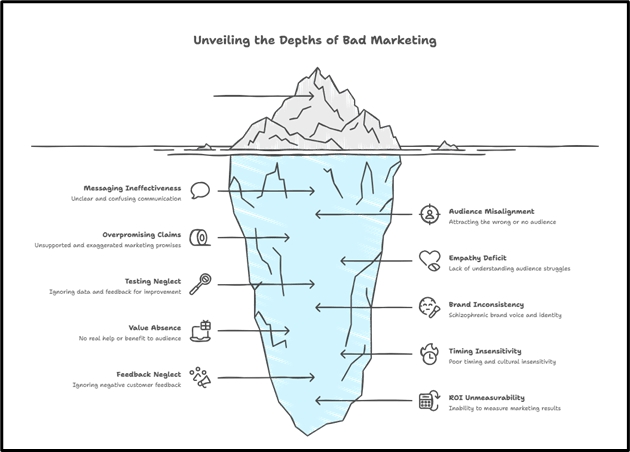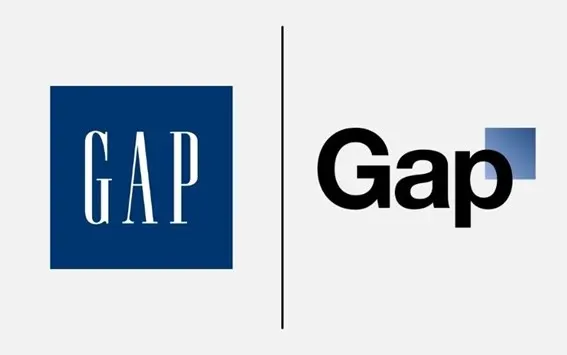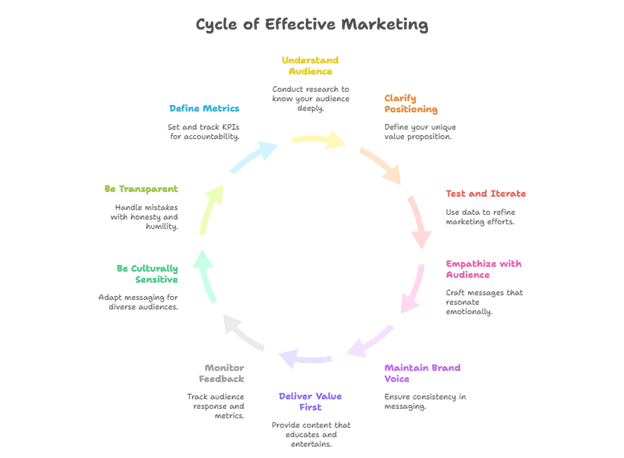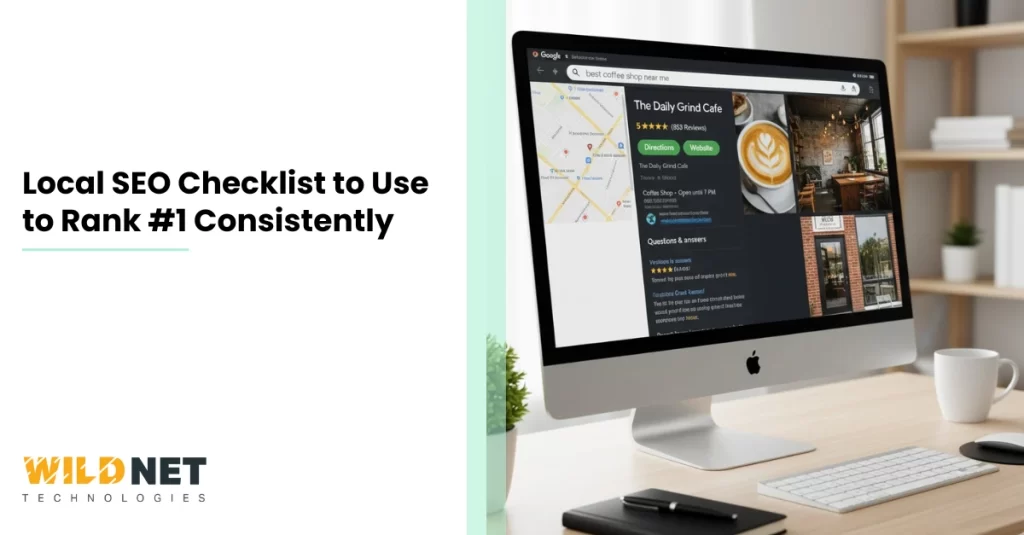Marketing is everywhere. It’s in your inbox, on social media, TV, billboards, podcasts, even when you’re watching a video online. When it’s done right, marketing feels helpful, relevant, and maybe even delightful.
But when marketing goes wrong, it’s called bad marketing.
“Am I doing it right?”
If this question came to your mind just now. Congrats! You’re doing the right sort of introspection.
To help you come to a conclusion, we, as the best digital marketing services provider, have brought this blog where we’ll walk you through how to spot bad marketing, why it happens, and what to do instead.
So, let’s get started!
What Do We Mean by “Bad Marketing”?
Bad marketing is any marketing effort that fails to connect with the intended audience, damages brand credibility, wastes resources, or does more harm than good.
So you can’t just call it an attempt that didn’t work. It’s much worse. Bad marketing often actively turns people off, creates confusion, or even backfires. Recognizing it early can save you time, money, and reputation.
Why Bad Marketing Happens
No one deliberately rolls out a bad marketing campaign. So, what gives birth to it? Well, here are some direct culprits:
- No clear audience or buyer persona: If you don’t know who you’re talking to, your message will not land.
- Trying to be everything to everyone: Diluted messaging loses impact.
- Ignoring feedback or data: When marketers don’t test, don’t listen to metrics, or dismiss negative reactions, mistakes persist.
- Shortcuts and laziness: Using generic templates, copying others, not investing in quality.
- Poor alignment with brand values: A message that contradicts your brand or seems inauthentic.
- Rushing to market without vetting: Cultural faux pas, tone-deafness, or missteps often come from insufficient review or sensitivity.
Because marketing is a part of everyone’s daily life, even a small misstep can cause big damage. Let’s get into the signs.
10 Signs You’re Looking at Bad Marketing
Below are red flags that suggest you’re seeing bad marketing. If multiple of these are happening together, it’s a warning.

Image 1.1. Infographic showing the depths of bad marketing
1. Vague or confusing messaging
If your audience can’t grasp what you offer, why it matters, or who it’s for, that’s a big problem. Good marketing is clear, concise, and easy to understand. Bad marketing mumbles around.
For example: “We provide holistic solutions to help you grow.” What does “holistic solutions” mean? What do you grow – revenue, platform, mindset?
When content is vague, you lose the chance to connect emotionally or logically with someone.
2. You’re attracting the wrong audience (or no one)
One strong sign of bad marketing is when your leads are mostly “no-fit”, people who won’t buy, aren’t interested, or don’t match your ideal customer profile. Or worse, you see no traction at all.
If your message is misaligned, you’ll either get irrelevant interest or none at all.
3. Overpromising or making unsupported claims
This is a classic: marketing that says it will do more than it can, or uses superlatives with no backing. Think “world’s best,” “100% guarantee,” or “lose 20 kg in two weeks.” When those claims lack evidence, they feel hollow. That’s often part of false advertising or puffery.
When your marketing overpromises and underdelivers, trust erodes. And that’s hard to rebuild.
4. Lack of audience empathy / being tone-deaf
Bad marketing often feels off, like the brand doesn’t understand people’s real struggles or context. Messaging that’s tone-deaf (ignoring current events or sensitivities) or disconnected from real human needs is a recipe for backlash.
For example, campaigns that hijack social issues superficially, like the infamous Pepsi + Kendall Jenner ad, are often cited as textbook cases of bad marketing because they tried to co-opt activism for a product.
5. No testing, no feedback loop
If your marketing team launches campaigns without A/B testing, without collecting data, and without being willing to pivot, that’s bad marketing in the making. Good marketing listens, measures, iterates.
When a message is going out to thousands or millions without being validated first, the risk of failure is high.
6. Inconsistent brand voice or identity
Bad marketing often feels schizophrenic: one ad is playful, another serious, another vague. There’s no thread of coherence. When your brand voice keeps changing, audiences struggle to recognize who you are or what you stand for.
Also, if your marketing contradicts your brand values, you sound inauthentic.
7. No value for the audience(all talk, no substance)
Poor marketing content doesn’t offer real help, insight, or benefit. It’s just promotional fluff: “Buy now! Limited time only! Our product is the best!”, with no real reason why.
Clutch, a content resources site, describes bad marketing content as vague, lacks focus, and fails to provide clear value.
If people walk away from your content thinking, “What did I actually get from that?”, that’s a failure.
8. Bad timing, tone, cultural insensitivity
Sometimes marketing is fine in concept, but it lands poorly because of timing (e.g. launching a frivolous campaign during a crisis), or missing cultural nuances.
Brands that expand globally often run into brand blunders when slogans or messages are mistranslated or offensive in local idioms.
A message that isn’t “wrong” in theory but feels wrong in context is dangerous.
9. Negative customer feedback or no response to complaints
How you respond to criticism, complaints, or social media backlash tells you a lot.
If your marketing is generating negative reactions, and you ignore them, delete them, or respond badly, that’s part of the problem. Do you know that around 45% of consumers say that they’re ready to visit a business that responds to negative feedback?
Also, if your marketing brings in attention, but it’s all negative, you’re damaging your reputation, not building it.
10. You can’t measure ROI or results
One of the worst telltales: no metrics, no KPIs, or no clarity on what “success” means. If your marketing is happening in a vacuum, with no way to assess whether it’s working, that’s shaky.
Bad marketing often masquerades as “creativity for creativity’s sake”, but without results, it’s just a sunk cost.
Real-World Examples of Bad Marketing (so you can see these traits in action)
Looking at big brands’ flops can help us internalize what not to do. A few infamous examples:
- Gap logo redesign (2010): Gap changed their iconic logo overnight. Huge backlash came in. They reverted back just six days later.

Image 1.2. The logo comparison of Gap
- Pepsi + Kendall Jenner ad: Attempted to associate a soda with activism; seen as tone-deaf and trivialized serious social movements.

Image 1.3. Kendall Jenner X Pepsi ad screenshot
- Dove Facebook ad mistake: A campaign intended to show transformation backfired when it appeared racially insensitive.

Image 1.4. Dove racially insensitive ad screenshot of 2017
These disasters share common threads: tone-deafness, misreading the audience, overreach, lack of testing, or poor timing.
How to Avoid Bad Marketing (or Fix It)
Okay, enough diagnosing. Let’s talk about how to prevent or correct bad marketing in your own efforts.

Image 1.5. Infographic showing the cycle of effective marketing
1. Know your audience deeply
Don’t skip the homework. Create personas, talk to real customers, survey, interview, and understand their fears, desires, language. Your messaging should feel like it’s speaking to them, not at them.
2. Clarify your positioning and value proposition
Why should someone pick you over someone else? What unique problem do you solve? Your messaging should revolve around this central clarity.
3. Test early, iterate often
Before you invest in big campaigns, do small pilots, A/B tests, get feedback, and validate reactions. Don’t just assume something will work. Use data to refine.
4. Start with empathy
When crafting messages or campaigns, always ask: How will people feel? Try to see through their eyes. Avoid gimmicks that come off as insincere or manipulative.
5. Maintain a consistent brand voice
Define your brand’s tone, values, and style. This becomes your baseline for every campaign. Even when you vary creative formats, the underlying voice should remain recognizable.
6. Deliver value first, sell second
Lead with content, insights, guidance, not just sales pitches. Educate, entertain, help. When people see value, they trust you more. That sets the stage for conversion.
7. Monitor sentiment, feedback, metrics
Keep a close eye on how audiences respond, through comments, social listening, surveys, performance metrics. Don’t ignore negative signals. Be ready to pivot or pull down campaigns if needed.
8. Be culturally literate and sensitive
If you’re operating across different regions or demographics, vet your messaging for local meaning, connotations, taboo topics. Use reviews and cultural checks before launch.
9. Be transparent, honest, and accountable
If you mess up, own it. Apologize, remedy, and pivot. Brands that handle missteps with humility often recover more strongly than those that gaslight or hide.
10. Define metrics and hold marketing accountable
Set clear KPIs (awareness, leads, conversion rates, ROI, engagement) and track them. Marketing should not be a black box. It should be measurable and iterated on.
When Bad Marketing Becomes a Warning Sign for Bigger Issues
Sometimes bad marketing is just a symptom. The root cause might be deeper:
- Misalignment between marketing and product team.
- Lack of internal clarity or vision.
- Poor organizational resources or budget constraints.
- Leadership forcing campaigns without listening to expertise.
- Lack of willingness to invest in long-term brand building.
If you repeatedly see bad marketing, don’t just fix the campaign, diagnose the systemic issue.
Final Thoughts
Bad marketing is more than just ineffective. It’s costly, reputation-damaging, and wasteful. But the good news is: many of its causes are avoidable. With empathy, clarity, measurement, and willingness to learn and pivot, you can catch these mistakes early (or prevent them from happening in the first place).
At its heart, marketing is a form of communication, and good communication comes when you know your audience, speak honestly, and deliver value. That’s how you turn marketing from a haphazard gamble into a meaningful asset.
Are you affected by bad marketing? If yes, Wildnet’s online reputation management services will help you clear all the dirt over your reputation. Connect now!
FAQs
Question 1. What exactly qualifies as bad marketing?
Answer:
When a marketing campaign fails to deliver the idea to its intended audience, damages trust or harms the reputation, waste resources, or backfires, it’s bad marketing.
It might be vague, tone-deaf, overselling, inconsistent, or unmeasured. In short, when your marketing does more harm than good.
Question 2. Why do some marketing campaigns that look “creative” still end up being bad marketing?
Answer:
“Creative” doesn’t always mean “effective.” A campaign can be clever or visually striking, but if it’s off-target (wrong audience), misaligned with brand values, insensitive in tone, untested, or lacking clarity, it becomes bad marketing. Creativity must be grounded in strategy, empathy, and data.
Question 3. How can small businesses or startups avoid falling into the trap of bad marketing?
Answer:
Here are a few practical steps:
- Start by understanding your audience deeply through interviews, surveys, personas.
- Define your value proposition clearly: who you help, how, and why it matters.
- Test small before scaling — pilot campaigns, A/B variations, prototypes.
- Monitor feedback and performance metrics early.
- Keep your brand voice consistent and authentic.
- Be ready to pivot or pull back if things aren’t resonating.
Small budgets mean fewer experiments, but also more incentive to avoid big blunders.
Question 4. How do I know if a campaign is turning into bad marketing after launch?
Answer:
Watch out for warning signs such as:
- Negative or vocal audience reactions (comments, social media, reviews)
- Poor engagement (low click-throughs, low time-on-page)
- High bounce rates or drop-offs
- Leads that don’t convert or are completely misaligned
- Metrics that don’t move or regress
- Brand confusion or feedback that your messaging is “out of sync”
If any of these arise, pause the campaign, dig into the data and feedback, and adjust.
Question 5. Can a failed or “bad marketing” initiative ever become a learning opportunity or turn positive?
Answer:
Absolutely. Some of the best marketing lessons come from mistakes. Here’s how to turn failure into value:
- Conduct a post-mortem: what went wrong, why, and where were assumptions weak?
- Capture insights: what audience cues were missed, what messaging flopped, what timing failed?
- Document learnings for future campaigns: Build a “what-not-to-do” playbook.
- If the public reception allows, respond transparently, own mistakes, and show how you’re adapting.
- Use the fallout (if not catastrophic) as a case study of improvement. Your audience may respect humility and continuous learning.
Many great marketers and brands have grown stronger from owning and recovering from missteps.
For expert help identifying ineffective marketing tactics and transforming them into strategic, performance-driven campaigns, consider partnering with Wildnet Technologies — their team specialises in diagnosing weak marketing efforts and driving meaningful growth.
Read More:
- What are the Latest Digital Marketing Trends?
- Using AI To Enhance SEO And Content Marketing Strategies
- Digital Marketing Strategy That’s Working Right Now







